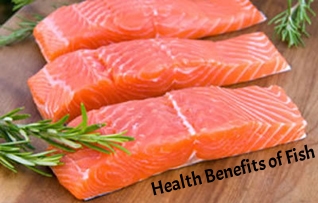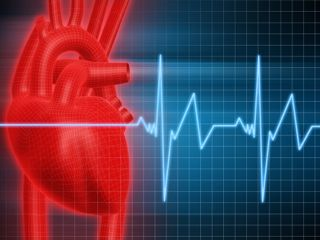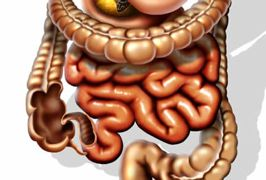
Fish for Your Health
Fish and shellfish are low in fat, high in protein, and good sources of iodine, vitamin D, and selenium—nutrients often deficient in the American...

Typical treatments include invasive interventions like percutaneous transluminal coronary angioplasty, coronary artery bypass grafting, and other surgeries. These treatments attempt to alleviate symptoms. Drugs are used to lower three risk factors: LDL Cholesterol, blood pressure and platelet function. These may include aspirin, beta blockers, angiotensin-converting enzyme inhibitors and lipid-lowering agents (statins). Patients are urged to quit smoking as a secondary prevention measure (Rakel, 2007, p. 301-303).
Artichoke leaf has been found to lower total cholesterol, though it may worsen gallstone disease or bile duct obstructions. Garlic (Allium Sativum) is known to inhibit platelet aggregation, protect from oxidized LDL and hypolipidemia, as well as reduce blood pressure. Red grapes, their juice, skins and seeds contain resveratrol; a a polyphenic compound that may inhibit LCL-C oxidative susceptibility, platelet aggregation and eicosanoid synthesis. Hawthorn in moderate doses may mimic benefits of cardiac pharmaceuticals. Policosanol is a waxy alipathic alcohol derived from beeswax or sugarcane that is used in some cholesterol lowering drugs (Rakel, 2007, p. 300-301).

There are four nutritional approaches recommended for CAD: low-carbohydrate diets, glycemic index diets, very low-fat diets, and the Mediterranean diet. These diets tend to swing too far in the other direction and may have potential health risks.
Dr. Dean Ornish popularized the very low-fat diet, along with some very effective recommendations for lifestyle change. However, care must be given to not over-consume refined carbohydrates and sugar. The quality of fat is more important than the quantity. Of the polyunsaturated fats, Omega-3 fatty acids are most beneficial. These are found in cold water fish and their oil, walnuts, soybeans, flaxseed and flaxseed oil, dark green leafy vegetables and game meats. The Omega-6 fatty acids that are popular in the standard American diet are more problematic and should be reduced. These are found mostly in vegetable oils and domestic meat. These fats are responsible for inflammation due to their arachidonic acid. The chemical makeup of hydrogenated fats (trans-fatty acids) contribute to dyslipidemia and increase risk for CAD and should be eliminated from the diet altogether (Rakel, 2007, p. 297).
High fiber legumes and vegetables promote a healthy digestive tract and help reduce cholesterol levels. Low glycemic index/load foods help balance blood glucose levels and reduce the risk of CVD (Rakel, 2007, p. 297).
The Mediterranean diet consists of lots of fresh, local fruits and vegetables; complex carbohydrates like whole grains, nuts, and beans; minimally processed foods; olive oil for fat; moderate amounts of dairy, fish and poultry; very rare red meat; and small amounts of wine with meals. This diet reduces markers for inflammation and ultimately cardiovascular events (Rakel, 2007, p. 297).
Functional foods are foods with bioactive properties as well as nutrient value. For lowering CVD risk consider using almonds, chocolate, tea, soy, plant sterols, oats, psyllium and eggplant. Moderate consumption of alcohol may reduce risk for CAD, but may also bring risks that must be evaluated on an individual basis (Rakel, 2007, p. 297-298).
Consider Nutritional Supplementation: Vitamin C, Vitamin E, Beta Carotene, Alpha-Lipoic Acid, L-Arginine, Propionyl-Carnitine, Vitamins B6, B12 and Folic Acid, Coenzyme Q10, Omega-3 (Rakel, 2007, p. 299-300).
Avoid smoking and excessive alcohol consumption. Obesity contributes dramatically to CAD risk and weight loss should be encouraged. Daily physical activity is imperative to reduce inflammatory markers and enable weight loss. Finding a connection between the physical heart and the spiritual heart aids in dealing with heart disease. Stress-management-type of work helps in dealing with stress prevalent among those with CAD.
Coronary Artery Disease, like most degenerative disease, is an illness that takes many years to develop due to lifestyle choices and diet direction. Nutrition education from an early age can squelch the prevalence of this killer. Early detection of complications would dramatically reduce the need for very invasive therapies and approaches to dealing with the effects of heart disease. More people would choose to alter their lifestyle if they knew how their daily decisions can eventually kill them. Waiting for dramatically reduced functionality of organ systems before diagnosing and therefore requiring change in lifestyle contributes to the need for drastic measures in dealing with CAD. Eliminating some of the major contributors to heart disease from our foods (i.e., trans fats) will also evoke dramatic change and reduction in its prevalence.
Sources
Metabolic Syndrome, (2010), Retrieved from http://www.americanheart.org/presenter.jhtml?identifier=4756
Coronary Artery Disease, (2010), Retrieved from http://www.nhlbi.nih.gov/health/dci/Diseases/Cad/CAD_WhatIs.html
Murray, M. 2005. The Encyclopedia of Healing Foods. New York: Atria Books.
Rakel, D. 2007. Integrative Medicine. Philadelphia, PA: Saunders

Fish for Your Health
Fish and shellfish are low in fat, high in protein, and good sources of iodine, vitamin D, and selenium—nutrients often deficient in the American...
